How much time and energy do you spend planning how to pass on your values to the next generation compared to passing on value? Our clients are evolving. Many increasingly hold multifaceted goals for their legacies, extending beyond financial objectives to encompass broader ambitions for impact on their families, businesses, and communities. Often however, the interplay within their ecosystem – a family office, a business, philanthropy, and co-owned real estate – is passively managed in siloes, where tensions in the one can have potentially significant negative ripple effects.
While these structural challenges within family systems can be complex, there may lie significant opportunities for enhancing the family’s cohesiveness and enduring impact. Each family’s unique values typically serves as the foundation for their overall legacy planning and often pulls through directly into their philanthropy. Engaging your family in philanthropy can be a powerful approach to unlocking the full potential of your influence and assets. But with nearly 80% of high-net-worth households not currently involving family members from other generations in their giving, how can you break the mould and pioneer a different approach?
| WHAT MATTERS TO THE NEXT GENERATION
Today's global challenges, from climate change and resource scarcity to social inequality and economic disparities, alongside declining trust in institutions, has shaped a new mindset among the next generation. A consistent finding across multiple studies is that next generation donors focus giving around issues and causes in contrast to older generations who tend to focus on giving to specific institutions. Recognizing this potential difference in view and approach is essential in establishing healthy conversations about philanthropy and impact. Millennials and Gen X tend to view impact not as a separate act of charity, but as an essential thread woven into every decision and every form of capital they hold. They are looking to embrace a far broader toolkit to make a difference, moving beyond traditional philanthropy to create a more integrated approach. But they still value family involvement and modelling most: 89% of next generation donors cite their parents influence on giving decisions, while 63% mentioned their grandparents and 47% their peers.
| INTRODUCING THE TOTAL IMPACT FRAMEWORK
Once the discussion around shared values and causes is under way, consider using a holistic framework to engage the next generation and help them to deploy the family’s resources with even greater strategy and purpose. Our Total Impact Framework holistically defines 'capital,' encompassing five distinct, yet complementary levers that can drive meaningful change: consumer capital, social capital, business capital, philanthropic capital, and investment capital. By thoughtfully leveraging multiple types of capital simultaneously, families can unleash even greater resources to achieve their desired positive outcomes, with potential to build powerful momentum for their impact goals both today and into the future.

These five levers are:
● Consumer Capital
This involves aligning purchases and lifestyle choices with brands and businesses that share your impact goals. Every dollar spent, whether on daily expenses or significant investments like real estate, contributes to market signals that can influence innovation, supply chain management, and corporate reporting decisions. Asking questions such as "What are your most significant expenses?" and "Do features of a product or service align to my goals, and would I even be willing to pay a premium?" can help identify opportunities to leverage this powerful form of capital.
● Social Capital
This refers to advocating via your personal network and offering your time and talents to advance a cause. It is a crucial and often overlooked resource accessible to all, regardless of financial wealth. Social media platforms now play a key role in connecting like-minded individuals and disseminating information, amplifying the reach of social advocacy and organizing. Engaging questions include (but not limited to): "Can you tap your network to help other individuals or organizations fundraise or expand their reach?" and "What skills do you possess to help a nonprofit organization maximize its effectiveness?"
● Business Capital
This relates to leading or leveraging a business to drive impact. It involves identifying product, operational, cultural, and governance mechanisms within a company that support both sustainability and profitability. Key considerations here can include: "What are the material risks to your business related to, for example, the climate transition and inclusive growth?" and "Are there governance and leadership practices in place to support your impact goals?"
● Philanthropic Capital
The most traditional form, this involves donating money or offering concessionary financial products (such as low-interest loans) to support a common good. Philanthropic capital can be deployed quickly and at any scale, often reaching areas not covered by traditional social networks or financial markets. It may serve as a tool to "double-down" on desired impacts alongside other capital types. Families should consider asking themselves: "Is your giving sufficiently strategic?" and "Where are there funding gaps in accomplishing your impact goals?"
"Millennials and Gen X tend to view impact not as a separate act of charity, but as an essential thread woven into every decision and every form of capital they hold. They are looking to embrace a far broader toolkit to make a difference, moving beyond traditional philanthropy to create a more integrated approach"

● Investment Capital
This powerful capital lever seeks to influence positive environmental or social outcomes while simultaneously achieving risk-adjusted returns. Often referred to as sustainable investing, it is a subset of traditional, market-rate investing that encompasses an array of tools and approaches. This approach can create a virtuous cycle of growing wealth while financing positive climate transition and inclusive growth outcomes. Families should consider: "Would you like your investment managers to emphasize specific sustainable investment criteria or themes?" and "Are you interested in promoting diversity among capital market participants?"
This framework provides a structured approach for engaging the next generation, offering tangible entry points and guiding questions that move beyond abstract discussions of "doing good" to concrete strategies for leveraging additional forms of capital.
| APPLYING THE TOTAL IMPACT FRAMEWORK TO NEXT GENERATION ENGAGEMENT
The true power of the Total Impact Framework lies in its ability to inspire families to leverage different types of capital, or combinations thereof, to drive profound impact. For the next generation, who often seek active engagement and a clear line of sight to results, this integrated approach is particularly compelling.
Leveraging Family-Owned Businesses for Impact.
For families with entrepreneurial roots, business capital presents an opportunity to embed purpose directly into their economic engines. For example, Ella’s Kitchen, founded by Paul Lindley, had an initial mission that was not financial, but rather improving children’s health by enhancing their relationship with food. This purpose-driven approach led to Ella’s Kitchen becoming one of the U.K.’s largest organic baby-food business, demonstrating how profit and purpose can powerfully enhance one another. After selling the business, Paul advocated for Ella’s Kitchen to become one of the U.K.’s first certified B-corporations, enshrining high standards of social and environmental performance. This is also possible within longer standing family-owned businesses as demonstrated by Alfredo Ferre who as a 4th generation family member, evolved a 75-year-old business and reshaped its purpose to transform the textile industry and provide scalable solutions for circular fashion models. By pivoting the company to focus on recycled cotton and fibers, Recover Textile Systems, based in Spain, can reduce 93% of its Co2 emissions compared with conventional cotton production while also saving virtually all water and land use typically devoted to production.

This example highlights how a family’s values and vision, when applied through business capital, can potentially create significant, systemic impact on employees, communities, and industries, alongside financial success. Family firms can be a powerful economic force, and in the US they are estimated to generate 64% of GDP and employ 62% of the workforce, in Asia and Latin America it is estimated more than 80% of companies are family owned.
The Rise of Impact Investing and Blended Approaches.
The next generation has demonstrated interest in ensuring their investment portfolios reflect their values, moving beyond traditional negative screening to actively seek out positive impact. This is where investment capital can become a powerful lever. The Blue Haven Initiative, founded by Liesel Pritzker Simmons and Ian Simmons, provides a compelling example. Their family office explicitly committed 100% of its portfolio to environmental, social, and governance (ESG) and impact investing. They not only allocate funds to market-rate investments aligned with their impact objectives but also strategically supplement this with philanthropic capital, focusing on initiatives that build the field of impact investing and unlock catalytic investments. This demonstrates how lessons learned from deploying investment capital inform and enhance philanthropic grantmaking, ensuring rigor and effectiveness across both.
This also underscores the evolution in thinking about financial mechanisms. Beyond direct investment, the use of concessionary financial products, enables a blended finance approach where philanthropic funds can de-risk or catalyze private investment for greater scale and impact.

The Power of Social Capital and Collective Action.
While financial capital is crucial, the next generation is deeply aware of the power of their networks and collective action. Social capital provides a unique avenue for impact. Francine A. LeFrak, for instance, used her robust professional and social networks to establish the Francine A. LeFrak Foundation Center for Well-Being at Barnard College, focusing on women’s empowerment. Her ability to connect those in need with funding, and to give social issues a "stage," exemplifies how personal influence and connections can amplify philanthropic efforts. Similarly, NBA star Joakim Noah leveraged his platform and network to co-found the Noah’s Arc Foundation, supporting underserved youth through artistic and athletic programming, and initiating the One City Basketball League to foster non-violent expression and conflict resolution among at-risk youth in Chicago. These instances demonstrate how powerful networks and reputations can be in mobilizing resources, fostering community, and driving change, often leading to a form of collective impact that extends far beyond individual giving.
Holistic approaches also necessitate an evolution in how impact is measured and managed. Just as investment decisions are made with rigor, the deployment of philanthropic and other forms of capital increasingly benefits from professionalization, clear strategies, and defined outcomes, mirroring the analytical approach seen in impact investing. This can help ensure accountability and scale positive change. And, increasingly, a best practice to consider involves incorporating community organizations and beneficiaries into the strategic design and outcome measurement of initiatives to improve alignment and build long-term sustainability.

| CONCLUSION
Engaging the next generation in the family's legacy is not merely about transferring wealth; it's about cultivating a shared sense of purpose and building a resilient family culture. By consciously identifying and leveraging consumer, social, business, philanthropic, and investment capital, families have the potential to strengthen their ecosystem and empower their next generation to become highly effective agents of change. This comprehensive approach can transform the conversation around wealth from simple accumulation to powerful deployment for global good. It enables families to create a lasting legacy that is not just measured in financial terms, but in the positive impact made on society and the planet, further cementing the family's values and vision for generations to come. The future of legacy is holistic impact, driven by the purposeful deployment of all available forms of capital.
This material is intended for educational purposes only. GSFO does not provide tax or legal advice. Please consult your tax and legal advisors regarding your particular circumstances.

Goldman Sachs
American multinational investment bank and financial services company.
goldmansachs.com




